Rebuilding 794 in the Third Ward
It's a beautiful view, but soon enough it will be obstructed again.
Pile drivers bang away between the Historic Third Ward and East Town as crews work to rebuild the eastbound elevated lanes of Interstate 794. The eastbound elevated stretch from the river to N. Milwaukee St. was demolished starting last fall, in a process that had one alderman and a number of area residents a bit annoyed. I’m sure they’re no less pleased with the banging from the current construction work. It’s all part of a massive project that will rebuild Interstate 794 from the Milwaukee River to the south end of the Hoan Bridge at Lincoln Avenue.
For now sunlight rains down on the Milwaukee Public Market and other Historic Third Ward buildings typically shrouded by concrete.
The project will reconfigure the Lake Interchange to a much more reasonable size, given that the Park East Freeway isn’t going to circle downtown and connect at the lakefront like it was originally intended. This will pave the way to make Clybourn a true boulevard and open a number of marquee development sites near the lake. The elevated freeway between downtown and the Historic Third Ward will be rebuilt, still casting its dark shadow, but it will have a number of “enhancements” to make it more appealing, including signage and improved lighting.
All this comes for the cost of $278 million. No public outcries have been heard about the cost of utility relocation for the project, something many must care about only when trains are involved.
Photo Gallery
Friday Photos
-
RNC Build Out Takes Over Westown
 Jul 12th, 2024 by Jeramey Jannene
Jul 12th, 2024 by Jeramey Jannene
-
Northwestern Mutual’s Unbuilding Changes Skyline
 Jul 5th, 2024 by Jeramey Jannene
Jul 5th, 2024 by Jeramey Jannene
-
New Apartment Building Rises In Summerfest’s Shadow
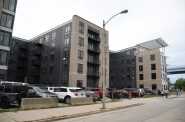 Jun 28th, 2024 by Jeramey Jannene
Jun 28th, 2024 by Jeramey Jannene
Photo Gallery
-
Bay View’s 4th of July Parade
 Jul 4th, 2024 by Jeramey Jannene
Jul 4th, 2024 by Jeramey Jannene
-
Independence Day Parades Snake Through Milwaukee
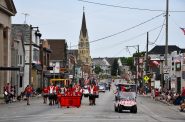 Jul 4th, 2023 by Jeramey Jannene
Jul 4th, 2023 by Jeramey Jannene
-
Juneteenth Draws Thousands To King Drive
 Jun 19th, 2023 by Jeramey Jannene
Jun 19th, 2023 by Jeramey Jannene


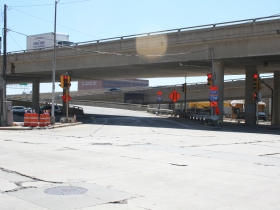
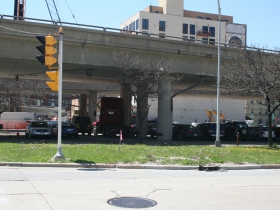
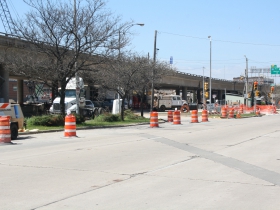
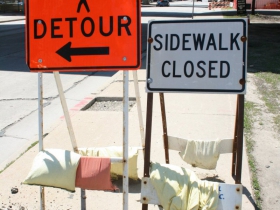
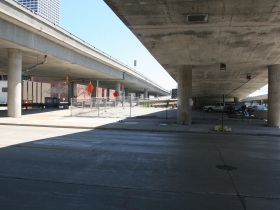
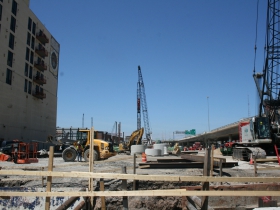



















“All this comes for the cost of $278 million. No public outcries have been heard about the cost of utility relocation for the project, something many must care about only when trains are involved.”
Well this is an interstate, so it will pay for itself. Maybe even make a profit!
🙂
Jerry;
Calm down and step away from that pen.
Consider please, even our covetous neighbors to the south who have been picking our pockets with tolls for many years can’t seem to make a profit with multilane highway systems.
Yes, there are benefits to highways. In the case of 794, transit of the freight that comes and goes out of the Port Of Milwaukee and all of those south side commuters finding their way downtown, but all in all they do not “make a profit”.
Highways, like Mitchell International, The Port of Milwaukee, MCTS, and the sewage plant are subsidized by tax money in some form or another.
Yes some of them have income streams. The highway system in this state is believed to be paid for by the ‘gas tax”. In Wisconsin (as well as almost every other state) is finding because of greater fuel efficiency and less miles driven by users, that tax is not and has not been adequate for maintenance of the system we have. Our state legislature has put new construction on our bonding credit card, more or less kicking the can down the road on how we will pay for it. But Profit! I’m sorry it don’t happen that way.
Photographers, take photos of the blue sky now available near the ramps, of the Public Market in sunshine, so a future generation can understand what we gave up for our cars.
“All this comes for the cost of $278 million. No public outcries have been heard about the cost of utility relocation for the project, something many must care about only when trains are involved.”
80% of Wisconsin’s commerce does not travel through Milwaukee on trains.
Well certainly, but does that mean utility relocation isn’t something to consider?
Andrey, the issue is larger than one person’s wallet. The decision to force Milwaukee to pay for the utility costs is an erosion of an important principle, and it may come to haunt especially small towns that need to relocate utilities to facilitate a factory plan to bring good jobs to the town.
If we apply the PSC’s decision on the Streetcar to that small town, the town will have to fund utility relocation costs, or give up on getting the factory. If the utility pays the costs the expense is spread out over a more general population larger than one town.
If this is a wise decision for the good of the state, I would appreciate an explanation.
Andrey (post 4) wrote “80% of Wisconsin’s commerce does not travel through Milwaukee on trains.”
So, where does “80% of Wisconsin’s commerce” travel? Certainly not on highways, since, in 2011, trucks only carried 33% of US freight (measured by ton-miles) compared to 40% for rail. (From Wikipedia–does anybody have a better source?).
When is construction expected to be completed?
Tom D, I’m not sure about your wikipedia info… but according to the DOT and Federal Highway Admin, in 2012 trucks carried 67% of all freight as measured by total weight and nearly as much in terms of total value. When you include non freight commerce, I can see Wisconsin being in the 80% range for all commerce being facilitated through highways.
Page 3- http://www.ops.fhwa.dot.gov/freight/freight_analysis/nat_freight_stats/docs/13factsfigures/pdfs/fff2013_highres.pdf
Andy, I said rail carried 40% of freight by TON-MILE; the data you cited is by ton (NOT ton-mile). Since trucks are used mostly for short distances, ton data greatly over-emphasizes truck use.
Maybe an example will help. Imagine a new, 2-ton automobile sitting in a Milwaukee showroom. The car was shipped 1,000 miles to Chicago by rail and another 90 miles to Milwaukee by truck. (Most new cars are shipped by rail in the US; Chicago has a huge rail yard where automobiles are transferred from trains to trucks.) Clearly, this car was shipped mostly by rail. Its ton-mile numbers (2,000 rail ton-miles, 180 truck ton miles) reflect this, but its ton numbers (2 tons by rail, 2 tons by truck) don’t.
In the same document you cited, look at figure 2.3b on page 7 (its only ton-mile data), which shows trucks carry nowhere near 67% of ton-miles. It is also unclear whether this highway-oriented publication (coming from the Federal Highway Administration) even contains complete rail data (since some charts say that they ignore Canadian-owned US railroads like the tracks Amtrak uses between Chicago to the Twin Cities).
My original source is:
http://en.wikipedia.org/wiki/Rail_transportation_in_the_United_States
(see heading “Traffic and public benefits”)
Jeffrey Jordan: I am with you; my original post was pure sarcasm. After all, we all know that the standard of needing to pay for itself only applies to transit projects in this state.
Tom D, sorry, when I originally wrote the message I included that I knew my data was different than ton-mile.
That being said, I don’t think that reporting it as total tons vs ton-mile overstates trucking… since most freight moves at a distance that would make train freight inefficient. Both stats are important, but you can’t just discount one because it doesn’t tell the story you want to tell.